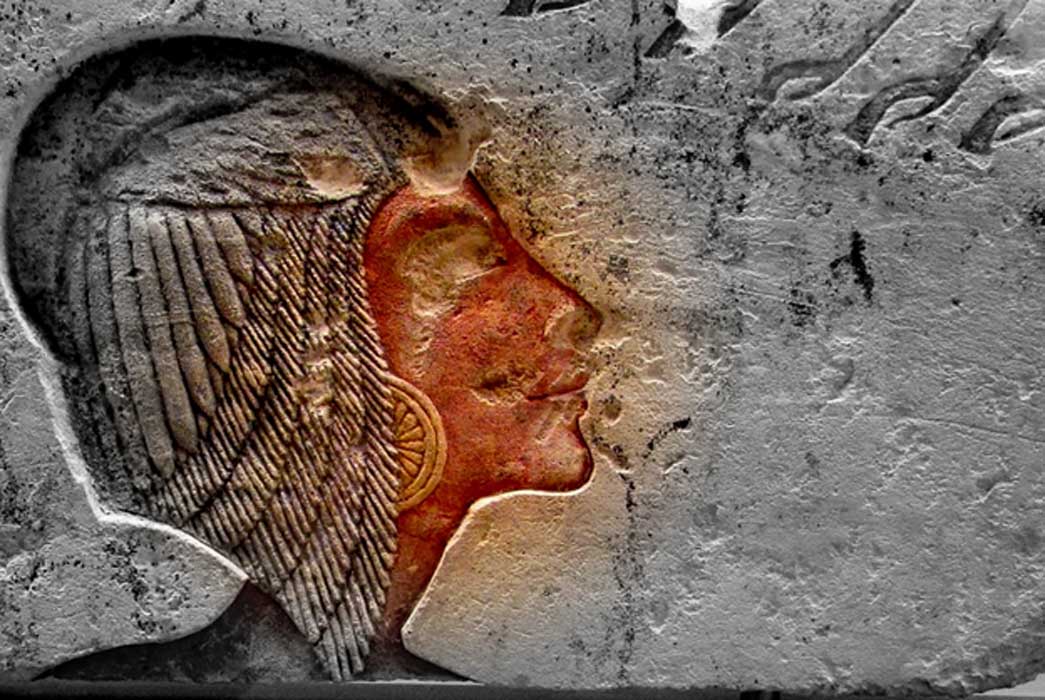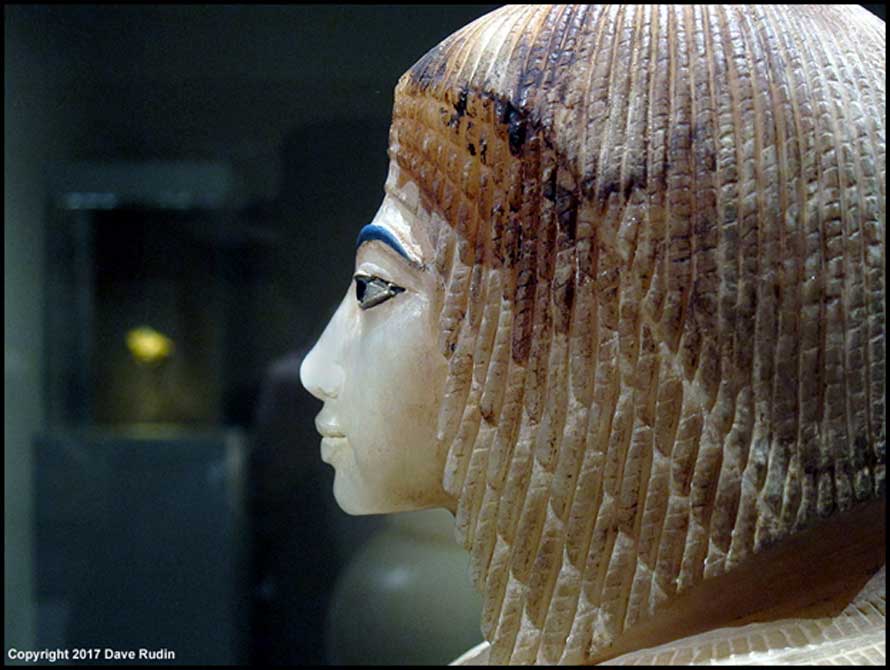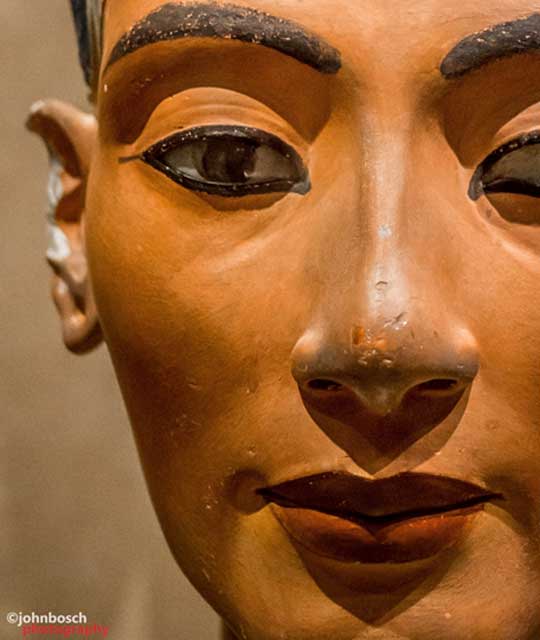
Quest for the Greatly Beloved Kiya: Eternal ‘Goodly Child of the Living Aten’—Part II
Not only does Akhenaten, the man and ruler, pose a conundrum to Egyptologists; but his entire family is shrouded in mystery too. Prime among them is Kiya, his obscure wife, who seems to have exercised considerable influence in the Amarna court; and yet, is little understood today. This is not merely the result of the damnatio memoriae inflicted upon the Amarna interlude by later pharaohs, but events in Akhenaten’s own time that led to the usurpation of Kiya’s monuments and appropriation of her funerary goods.

One of the four elegant canopic jar stoppers made of Egyptian alabaster that was discovered in a niche in Tomb 55. It represents a royal lady wearing the Nubian wig. The uraeus was snapped off and the inscriptions on the jar erased in antiquity, but experts reconstructed the name “Kiya”. Davis/Ayrton excavations, 1907. Metropolitan Museum of Art, New York.
Kiya’s Disappearing Act
Kiya vanished from the records around Regnal Year 11 of Akhenaten's reign, as one of the last datable instances of her name is a wine docket from Amarna that mentions that year; indicating her estate produced a vintage. There is no indication about her ultimate fate, and Egyptologists have put forth several possibilities in their attempts to solve the conundrum, including that she was a victim of the plague that swept Akhetaten; court intrigues by a jealous Nefertiti; and death during childbirth.
Julia Swanson veers towards the likelihood of Kiya as the mother of Tutankhamun: “… a woman is shown behind Akhenaten and Nefertiti carrying away a child sitting in her arms. It has been suggested that this might be Meketaten’s baby fathered by Akhenaten and that she died in childbirth. There is no evidence for this. Who was this child and what happened to it? It could in fact have been a younger brother or sister of Meketaten’s born to Kiya. Another suggestion was that Meritaten as the official “Heiress”, might have had a child by her father with the object of keeping the royal succession in the legitimate line, and that she, too, at her death, might have been buried in this tomb: no evidence remains however.
“These children could have been Kiya's children by Akhenaten. Certainly, Ankhesenpaaten was too young to have borne Tutankhamun. Was he not Kiya’s son? And was this the reason, as has been suggested, why her name was denied her and over-carved by Meritaten's to register, as it were, an apparently ‘legitimate’ succession? The art in the royal tomb, although revised in some places, appears in the main to be that of the middle period of the reign, which accords with the ‘trio’ as described on the Hermopolis blocks - the figures of a crowned king with an uncrowned woman, and a child - who could well be Akhenaten, Kiya and their child.”

Several theories have been proposed to explain the reasons for the disappearance of Kiya around Regnal Year 11 of Akhenaten; prime among them is scheming by the ‘Great Royal Wife’ Nefertiti whose ascent was blocked when Kiya gave birth to Tutankhaten. There is no proof to back this claim, and therefore, it remains in the realm of speculation. Iconic painted, stucco-coated limestone bust of Nefertiti who co-ruled with her husband, and probably independently, upon his death. Egyptian Museum, Berlin.
Since the burial equipment of both Kiya and Nefertiti had been available for re-allocation at Thebes in the immediate post-Amarna period, it follows that the bodies of these two queens must have been present at Thebes also. Where could they rest now? On the model of Tomb 55, the likelihood is that these queenly bodies, partially re-equipped, were re-interred in small tombs in the Valley of the Kings. “If these deductions are correct, then the Valley of the Kings reburials of Nefertiti, Kiya and other members of the Amarna crew still await discovery or identification,” Dr Nicholas Reeves opines.




